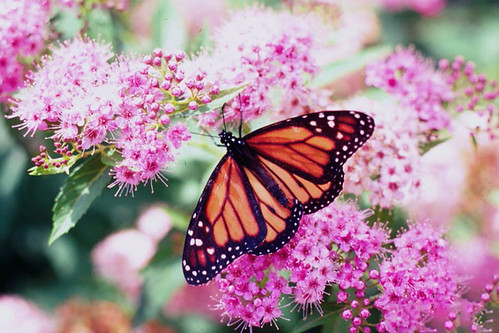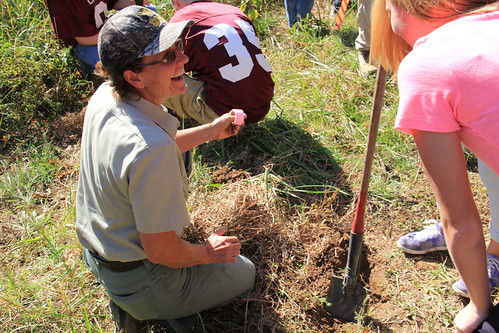
With more than 80 percent of the world’s flowering plants relying on pollinators, their importance to natural ecosystems and agriculture cannot be overstated. However, populations of pollinators, including bird, bat, butterfly, beetle and bee species, have been declining around the world. Recognizing the importance of pollinators, Secretary Tom Vilsack of the U.S. Department of Agriculture has proclaimed June 15 to 21, 2015 as National Pollinator Week.
To celebrate Pollinator Week, we are sharing some of the Forest Service’s work to conserve one iconic pollinator species and its habitat – the Monarch butterfly. Monarch butterflies complete incredible migrations of hundreds to thousands of miles each year across North America. Along their migratory paths, Monarchs rely on habitats that contain milkweed species, which is the only plant that they lay their eggs on. Monarch caterpillars feed exclusively on milkweed, which contains chemical compounds that make them poisonous to potential predators.
Spread across central Arkansas and southeastern Oklahoma, the Ouachita National Forest has been promoting environmental education with local students and communities. As part of a Collaborative Forest Landscape Restoration project, the Forest Service has partnered with Native Expeditions and Monarch Watch to teach local students about pollinators and engaged them in habitat restoration for Monarch butterflies.
This past fall, nine schools around the Ouachita National Forest participated in this restoration event, with more than 370 students planting milkweed at their schools and on designated sites within the national forest. More than 1,000 milkweed plants of various species were planted! Additionally, more than 1,000 students were taught within the Shortleaf-Bluestem Community Collaborative Landscape Restoration project area about the importance of local ecosystems and the tools needed to restore native landscapes. These students also assisted the Forest Service in restoration efforts, re-establishing pollinator sites on the national forest, and planted pollinator-friendly species to create habitat in their school yards.
Researchers with Forest Service Research and Development are working hand-in-hand with land managers to better understand pollinator science. Kas Dumroese, a Research Plant Physiologist with the Rocky Mountain Research Station, is working with collaborators to investigate methods for propagating milkweeds. “Monarchs once thrived across North America but their numbers have declined dramatically, about 97 percent, during the past two decades,” said Dumroese. By making it easier to incorporate milkweed species into plantings, native plant nurseries and their clients can help create and re-establish suitable habitats for Monarchs and other pollinators.
The Forest Service is committed to protecting, conserving and increasing habitat for Monarchs and other pollinators, and is an important partner for the Monarch Butterfly Conservation Fund. Established by the National Fish and Wildlife Foundation, the fund focuses on three priority conservation needs: restoring habitat, increasing organizational capacity and coordination among stakeholders, and producing and distributing native seeds. Learn more about what you can do to help pollinators, with the Forest Service and the Pollinator Partnership.
This post is part of a series featuring the Forest Service’s work on restoration across the country.

